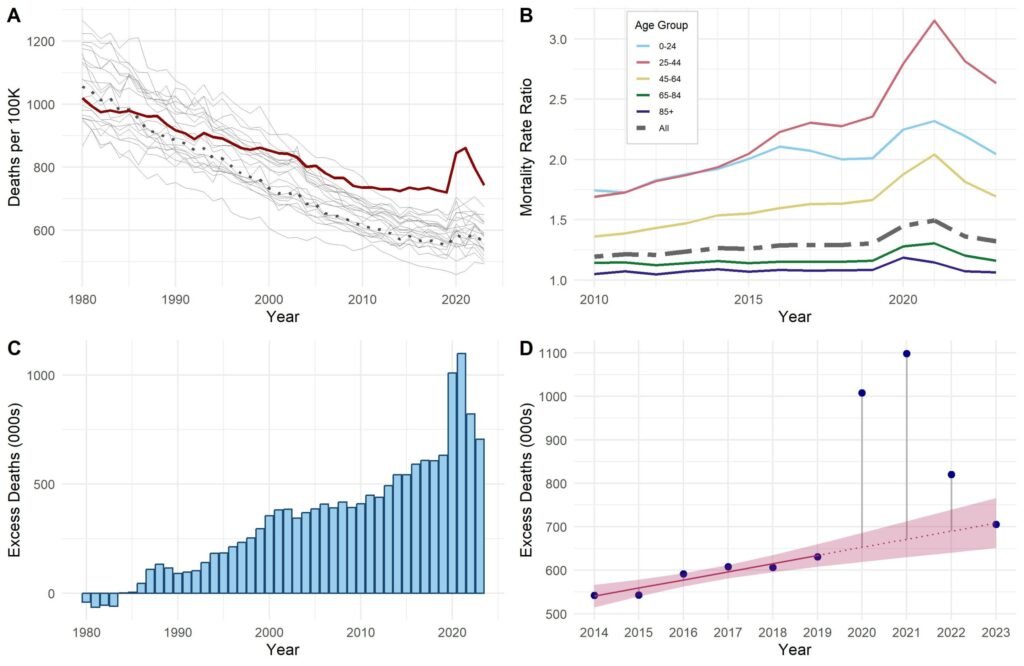The United States continues to face a significant challenge in its mortality rates compared to other high-income countries, with over 1.5 million “missing Americans” in 2022 and 2023. These excess deaths represent individuals who would have survived if US mortality rates were on par with those of its peer nations. A recent study led by researchers from Boston University School of Public Health sheds light on this troubling trend, which has been ongoing for the past four decades.
The study, published in JAMA Health Forum, highlights the persistent disparity in US mortality rates compared to other wealthy nations. Despite a peak in excess deaths during the height of the COVID-19 pandemic in 2021, the numbers remained alarmingly high in 2023, exceeding pre-pandemic levels. In 2023, there were 705,331 excess deaths, a figure that reflects the ongoing crisis in US mortality rates.
One striking finding of the study is the disproportionate impact on working-age adults, with 46% of US deaths among individuals under 65 years old being potentially preventable if the US matched the mortality rates of its peer countries. This age-related disparity has persisted before, during, and after the pandemic, illustrating a concerning trend in premature deaths among younger Americans.
The researchers emphasize the need for comprehensive policies and interventions to address the underlying causes of excess deaths in the US. Factors such as drug overdoses, gun violence, car collisions, and preventable cardiometabolic deaths contribute to the higher mortality rates in the country. These deaths are not simply a result of individual choices but reflect systemic failures and policy neglect.
Moving forward, the study calls for a closer examination of the policies and practices of other high-income countries that have successfully reduced health inequities and improved population health outcomes. Universal healthcare, strong safety nets, and evidence-based public health policies have been shown to lead to longer and healthier lives in other nations.
However, the researchers acknowledge the unique challenges facing the US, including public distrust of government and political polarization that hinder the implementation of effective health policies. The study warns that continued neglect of public health, scientific research, and social safety nets could widen the health disparities between the US and its peers, leading to more preventable deaths.
In conclusion, the study underscores the urgent need for targeted interventions to address the persistent disparity in US mortality rates. By learning from the successes of other countries and implementing evidence-based policies, the US can work towards reducing excess deaths and improving the overall health and well-being of its population.


